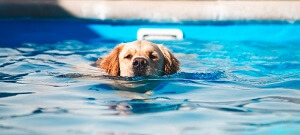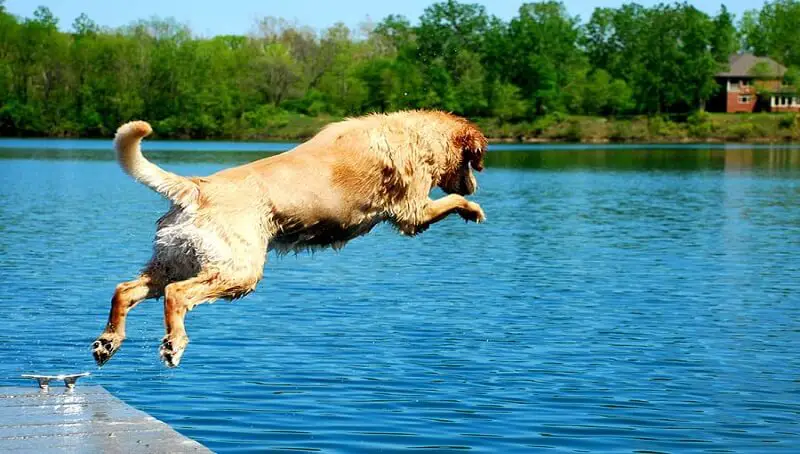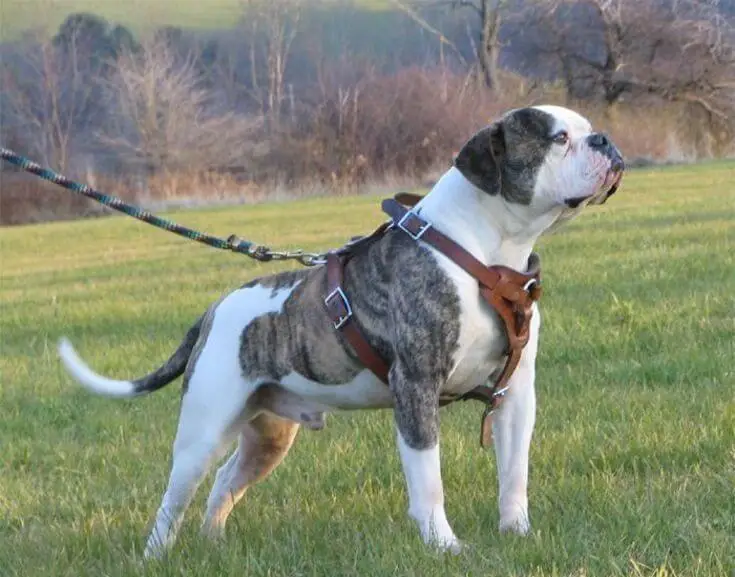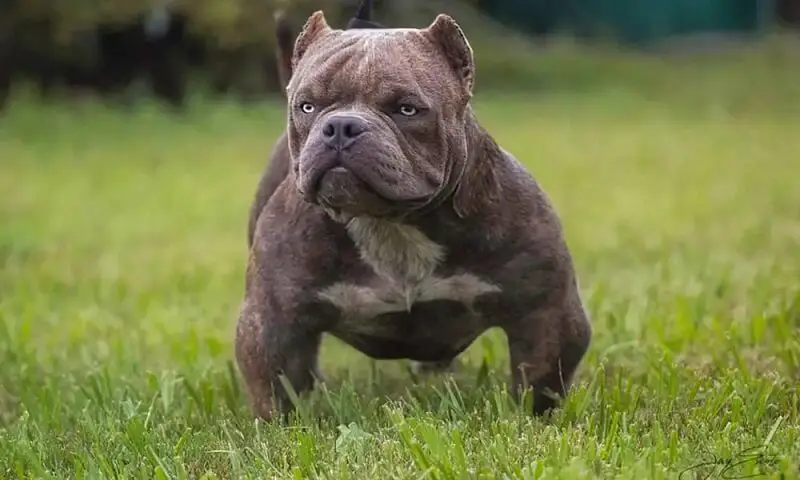Swimming is not only meant to cool the dog in a warm summer. The animal’s physical shape and wrists also benefit from exercises in the water throughout the entire year. Find out why swimming improves the health of overweight and old dogs and how fun it is.
Why is swimming so good for dogs?
Whether you are with your dog on the beach, at an outdoor pool, or in a dog pool, the dog’s body is working from head to paw when in the water. This form of movement is very beneficial for the joints of old dogs. If the animal recovers after an operation, activity in the water, as part of the dog’s physiotherapy, helps reduce pain.
Even the bigger ones, who like to eat, will enjoy swimming. If you have an overweight quadruped, swimming helps him to lose the extra weight step by step and maintain good physical shape.
The benefits of swimming for dogs
Besides being refreshing and fun, swimming for dogs has many other positive effects:
- It helps in the development of muscles.
- Movement in water helps the joints.
- Increases the dog’s resistance.
- Overweight dogs burn calories.
- Strengthens the cardiovascular system.
- Older dogs remain mobile for a longer period of time.
The reason why swimming has so many benefits is that swimming for dogs is a whole-body workout. The dog’s body is constantly working against the resistance in the water. At the same time, the fact that the animal floats in the water ensures that the movements are easier for the dog to perform than they would be on land. The joints and muscles relax and the heart and lungs are strengthened.
Don’t want to read the full article? Listen to a summarized version:
How to make swimming something fun for the dog
Choose a suitable location for swimming with your dog. Small, calm water with a clean shore would be ideal for beginners. Watch out for standing water and prolonged heat. Blue-green algae can be dangerous to the health of your dog and also to you.
You might also like my articles on whether cows, elephants, and deer can swim.
A good and safe option, which you can use with the animal for the whole year, is a dog pool.
Do not put a leash or harness on it when you go swimming. But a useful accessory would be a life jacket, which is especially recommended for beginner dogs.
It’s important that the dog listens to you and that you can call him back from the water at any time. Even if the animal is having a lot of fun swimming let it take breaks more often. Just a few minutes in the water can be quite exhausting, especially if it has no experience.
If you want to combat obesity or joint problems in the dog with the help of swimming, it is best to discuss this with a veterinarian first.
Other tips for swimming with your dog safely:
- Be careful of the current and watch the water temperature. Too cold water can stress the dog’s body in the summer.
- Always keep an eye on the dog and let him take rest breaks, preferably in a shady place.
- If you want to avoid stomach stress, do not feed your dog for at least two hours before you take him swimming.
- Dry the dog’s fur well after the swim session, and the ears also.
- Sick or injured dogs have no place in the water.
- Dogs instinctively know how to move best in the water.
Which dogs like to swim?
There are breeds of dogs that already have an affinity for water, such as the Spanish and Portuguese water dogs. They are anatomically ready for swimming. The Labrador or Golden Retriever feels just as good in the water.
The following is true for all breeds: the earlier the dog has contact with water, the easier it will get used to it.
Can any dog swim?
Most dogs are born swimmers and will get used to it quickly after a brief familiarization phase. But there are breeds that cannot move as elegantly in the water because of their body structure. For example, mops and Bulldogs often find it hard to float because of their short legs, and their small nose quickly fills with water.
Even if they don’t become Olympic swimmers, with a little patience and empathy, even these dogs can get used to the water. Sit next to your dog, praise him and reward him. Dog toys can also help relieve the anxiety of dogs when they first meet the water.
Your dog does not want to swim?
If neither encouragement nor patience helps, the dog may have had negative experiences with water in the past. In this case, a swimming course with an experienced trainer would be a good idea to avoid further trauma.
In no case, you should force your dog to swim. If you want to do something good for a recovering dog or an obese dog, you have many other options.
Tips on swimming for dogs
 Once you have overcome the initial obstacles and the dog is in the water, it will probably move on its own. Dogs that are reluctant to move, or need variety and activity can be encouraged with the right accessories, which will ensure that the dog never gets bored when swimming. In all animal stores, you will find a large selection of dog toys for water.
Once you have overcome the initial obstacles and the dog is in the water, it will probably move on its own. Dogs that are reluctant to move, or need variety and activity can be encouraged with the right accessories, which will ensure that the dog never gets bored when swimming. In all animal stores, you will find a large selection of dog toys for water.
Of course, your expectations of the dog’s “performance” in the water should depend on his physical shape and how much he likes to swim.
Overweight dogs should take it easy. The most important thing is to be active and to enjoy it. Start with small steps and walk the dog in small water along the shore. Even walking is a good activity for him. You can increase the level step by step from here.
Inspiration for advanced swimmers
Dogs in better physical shape can be motivated by floating toys, which they gladly bring to the shore. If you want a more intense workout, you can accompany your dog in the water. Swim past him at a safe distance and avoid accidental contact with his claws.
A life jacket is recommended for longer swimming sessions because dogs often exceed their limits. So, watch your dog and make sure he gets enough rest.
If you and your dog are already an advanced team in the water, you can slowly accustom them to a paddle board. With a little patience, you will soon make small laps on a lake, which you can combine with fetch exercises. Try to train your dog’s sense of balance with the help of the paddleboard.
Final words
Always let him have fun! With my advice, you can make sure that the dog likes swimming and gets healthier. Whether the animal is overweight and needs to burn calories or just getting used to the water, fun should come first for both humans and dogs. Because only a happy dog can be healthy in all respects.




